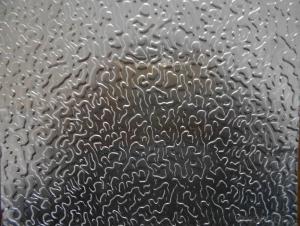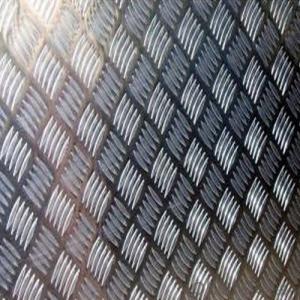1/16 Diamond Plate Aluminum
1/16 Diamond Plate Aluminum Related Searches
Led Light Bulbs For Ceiling Fixtures Led Lamps For Ceiling 42 In Ceiling Fan With Light Aluminum Coil Stock For Gutters Aluminum Foil For The Grill Hole Saw For Aluminum Plate Aluminum Tread Plate For Trailer Bow Plate For Aluminum Boat Aluminum Foil For Grow Room Aluminum Foil For Joint PainHot Searches
Stock Price For Aluminum Aluminum Coil Stock For Sale Aluminum Gutter Coil For Sale Used Aluminum Scaffolding For Sale 1/4 Aluminum Plate For Sale Aluminum Bar Stock For Sale Aluminum Round Stock For Sale Aluminum Diamond Plate For Sale Aluminum Scaffolding For Sale Craigslist 6061 Aluminum Plate For Sale Aluminum Dock Plate For Sale 7075 Aluminum Plate For Sale Aluminum Tread Plate For Sale Aluminum Checker Plate For Sale Aluminum Plate For Sale Near Me Plate Aluminum For Sale Aluminum Plate For Sale Aluminum Square Stock For Sale Aluminum Flat Stock For Sale Billet Aluminum Stock For Sale1/16 Diamond Plate Aluminum Supplier & Manufacturer from China
Okorder.com is a professional 1/16 Diamond Plate Aluminum supplier & manufacturer, offers integrated one-stop services including real-time quoting and online cargo tracking. We are funded by CNBM Group, a Fortune 500 enterprise and the largest 1/16 Diamond Plate Aluminum firm in China.Hot Products
FAQ
- I am trying to find away of turning aluminum oxide or alumina into just aluminum. Please post all ideas i dont care how crazy.
- ensure u have distilled water cuz if there is salt in it, u might finally end up freeing chlorine interior the air and die. haha. ok, take a 9 -12 volt battery or something like that and placed 2 wires from the positve and unfavourable ends interior the water. the only cord that bubbles extra is the hydrogen. so turn a attempt tube and placed it interior the water and so as that there is not any air interior the attempt tube. whilst the cord is going in, the hydrogen will fill it up and u'll be left with organic hydrogen interior the tube. i don't be conscious of if i defined it perfect yet there are a team of video clips on youtube. examine them out.
- Can aluminum plates be welded with stainless steel or iron nuts?
- In theory, yes, such as brazing.In fact, few people do that:Aluminum and steel systems do not form stable alloy remelting. Brazing is actually the use of third materials to link two original or dissimilar materials together. Unlike bonding, a stable alloy phase can be formed.
- Different methods exist for cleaning aluminum sheets, each with unique advantages and suitability for various situations. Common methods include: 1. Mechanical Cleaning: Scrubbing the aluminum sheet with abrasive materials like sandpaper or wire brushes can physically eliminate dirt, oxidation, or other contaminants. Although effective for removing severe stains or corrosion, this method may cause scratches. 2. Chemical Cleaning: Utilizing cleaning agents or solvents, chemical cleaning dissolves and eliminates dirt, grease, or oxidation from the aluminum sheet. Depending on requirements, the cleaning agents can be acidic, alkaline, or neutral. This method is ideal for removing light stains or surface oxidation and is suitable for large-scale cleaning operations. 3. Electrolytic Cleaning: By immersing the aluminum sheet in an electrolyte solution and applying a direct current, electrolytic cleaning uses electricity to dissolve and separate contaminants from the surface. This method is effective for eliminating heavy oxidation, corrosion, or stubborn stains. 4. Ultrasonic Cleaning: Placing the aluminum sheet in a tank filled with a cleaning solution and subjecting it to high-frequency sound waves, ultrasonic cleaning creates tiny bubbles that dislodge dirt particles upon contact with the sheet's surface. It is suitable for removing fine particles, oils, or grease. 5. Steam Cleaning: High-pressure steam is employed in steam cleaning to remove dirt, grime, or contaminants from the aluminum sheet's surface. The steam's high temperature and pressure break down dirt particles and sanitize the sheet. This method effectively removes oils, greases, or organic residues. When selecting a cleaning method for aluminum sheets, factors such as the type and severity of contamination, desired cleanliness level, and specific application requirements must be considered. Additionally, it is crucial to follow safety guidelines and use appropriate protective equipment when handling cleaning agents or working with electrical equipment.
- Who knows the ceiling size of aluminum hang-parcel?
- General size of aluminum hang-parcel: 100mm、150mm、200mm、250mm, you can order the length according to your actual demands. General color of aluminum hang-parcel: white, black, blue, pearl white, bianco canopus, etc. you can order the color according to your actual demands. General thickness of aluminum hang-parcel: 0.4mm、0.5、0.6、0.7、0.8mm, you can order the thickness according to your actual demands.
- Aluminum sheets have the ability to undergo anodization for the purpose of aesthetics. Anodization is an electrochemical procedure that forms a protective oxide layer on the surface of the aluminum. This layer has the potential to be colored in a variety of shades, thus offering a wide range of aesthetic possibilities. Anodized aluminum sheets are highly sought after in the field of architecture, particularly for constructing facades, due to their enduring and visually pleasing appearance. Furthermore, the anodized layer bolsters the aluminum's resistance to corrosion and wear, making it suitable for both indoor and outdoor applications. Moreover, anodized aluminum sheets can be subjected to additional processes like etching or laser engraving, enabling the creation of intricate designs and patterns.
- Yes, aluminum sheets can be used for manufacturing heat sinks. Aluminum is a popular choice for heat sinks due to its excellent thermal conductivity properties. It is lightweight, has high electrical conductivity, and is easily machinable, making it an ideal material for dissipating heat from electronic components. Aluminum sheets can be easily formed, cut, and shaped into the desired heat sink design, allowing for efficient heat transfer and dissipation. Additionally, aluminum is corrosion-resistant, which ensures the longevity and reliability of the heat sink. Overall, aluminum sheets are commonly used in the manufacturing of heat sinks for various applications in industries such as electronics, automotive, and aerospace.














































